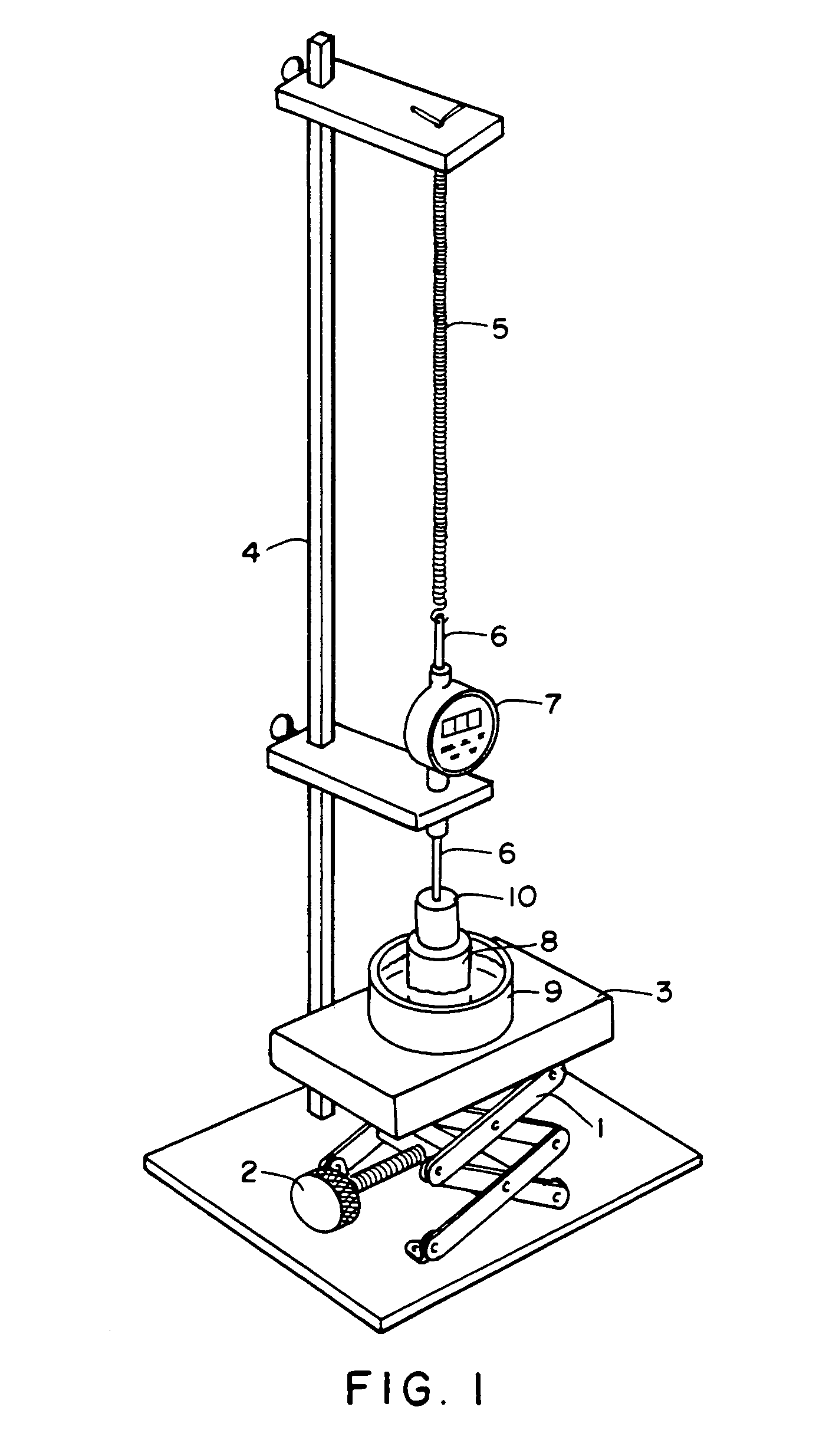Absorbent composition
a technology of absorbent materials and compositions, applied in the field of absorbent compositions, can solve the problems of general inferior absorbent properties, natural-based absorbent materials have not gained wide use in personal care products, and the use of such products is not wid
- Summary
- Abstract
- Description
- Claims
- Application Information
AI Technical Summary
Problems solved by technology
Method used
Image
Examples
example 1
[0089]About 0.16 g of polyacrylic acid gel, chitosan, polyacrylamido methylpropane sulfonic acid, or polydiallyl dimethyl ammonium hydroxide, each with a particle size ranging from 300 to 600 microns, was separately weighed and placed into a testing cylinder to test its absorbing rate and total absorbency. Also, 0.16 g of mixtures of various polymers with the same particle size range and a molar ratio of one to one of the two respective polymers was weighed and placed into a testing cylinder to test absorbing rate and total absorbency of the mixtures. The results of the testing are listed in Table 2. The pKa value for Sample 3 represents the pKa for acrylic acid. The pKa value for Sample 13 represents the pKa for acrylamidomethylpropanesulfonic acid. The pKb value for Sample 14 represents the pKb for diallyldimethylammonium chloride.
[0090]
TABLE 2Time toReach 60%Material(s)Molar Ratioof Free SwellFree SwellUsedpKaapKba(acid / base)CapacityCapacity*Sample 34.251 / 07 min8.5g / g*Sample 125–...
example 2
[0091]About 0.16 gram of polyacrylic acid gel, chitosan, commercial polyacrylate gel or mixtures of polyacrylic acid (with different particle size distribution) and chitosan were weighed and placed into a testing cylinder to test its absorbing rate and total absorbency. The Table 3 summarizes the results obtained.
[0092]
TABLE 3Time toMaterial(s)Reach 60% ofFree SwellUsedParticle SizeMolar RatioTotal CapacityCapacity*Sample 1300–600μmNA3min41.2g / g*Sample 3300–600μmNA7min8.5g / g*Sample 12300–600μmNA9min3.4g / gSample 2 / 12150–300μm1 / 140min24.9g / gSample 3 / 12300–600μm1 / 160min30.2g / gSample 4 / 12600–850μm1 / 1100min25.4g / gSample 5 / 12>850μm1 / 1160min16.5g / g*Not an example of the present invention.
example 3
[0093]Either water insoluble polymer gel or water soluble material was selected as the second basic material and mixed with acidic polyacrylic acid gel to evaluate the absorbing rate and total absorbency. Table 4 lists the results obtained. The sodium hydroxide used (NaOH) is pre-dissolved into 0.9 weight percent sodium chloride solution. The NaHCO3 or the NaCitrate is mixed directly with the acidic polyacrylic acid gel. The NaCitrate represents citric acid trisodium salt. The pKa value for Sample 3 represents the pKa for acrylic acid. The pKa value for Sample 14 represents the pKb for diallyldimethylammonium chloride.
[0094]
TABLE 4Time toReach 60%Material(s)TotalFree SwellUsedpKapKbMolar RatioCapacityCapacity*Sample 34.25—NA 7 min8.5g / gSample 3 / 124.255–71 / 160 min30.2g / g*Sample 3 / 144.251 / 1 2 min42.0g / gSample 3 / 4.251.5 / 115 min16.0g / gNaOHSample 3 / 4.251 / 1.110 min22.2g / gNaOHSample 3 / 4.251 / 1.440 min33.2g / gNaOHSample-3 / 4.25>21 / 130 min19.4g / gNaHCO3Sample-3 / 4.25>21 / 130 min19.3g / gNaCitrate*No...
PUM
| Property | Measurement | Unit |
|---|---|---|
| Dimensionless property | aaaaa | aaaaa |
| Dimensionless property | aaaaa | aaaaa |
| Temperature | aaaaa | aaaaa |
Abstract
Description
Claims
Application Information
 Login to View More
Login to View More - R&D
- Intellectual Property
- Life Sciences
- Materials
- Tech Scout
- Unparalleled Data Quality
- Higher Quality Content
- 60% Fewer Hallucinations
Browse by: Latest US Patents, China's latest patents, Technical Efficacy Thesaurus, Application Domain, Technology Topic, Popular Technical Reports.
© 2025 PatSnap. All rights reserved.Legal|Privacy policy|Modern Slavery Act Transparency Statement|Sitemap|About US| Contact US: help@patsnap.com

